They change color, move their eyes like aliens, and grab branches with zany little mitten hands—what’s not to love?
Chameleons look like tiny jungle wizards with a flair for the dramatic. But before you bring one home thinking it’s a low-maintenance lizard with a party trick, buckle up.
These guys are divas.
They stress easily, demand perfect temperatures, and might snub the fancy enclosure you spent hours building. One wrong move, and your magical new roommate turns into a grumpy reptile statue that refuses to eat.
Still want one?
Good. Because when cared for properly, chameleons are fascinating, beautiful, and totally worth the effort.
But first, you need the truth. Not the pet store pitch or TikTok cuteness—real facts.
Here are 11 things every future chameleon parent absolutely needs to know. Read this before you fall in love with those googly eyes.
Chameleons Change Colors
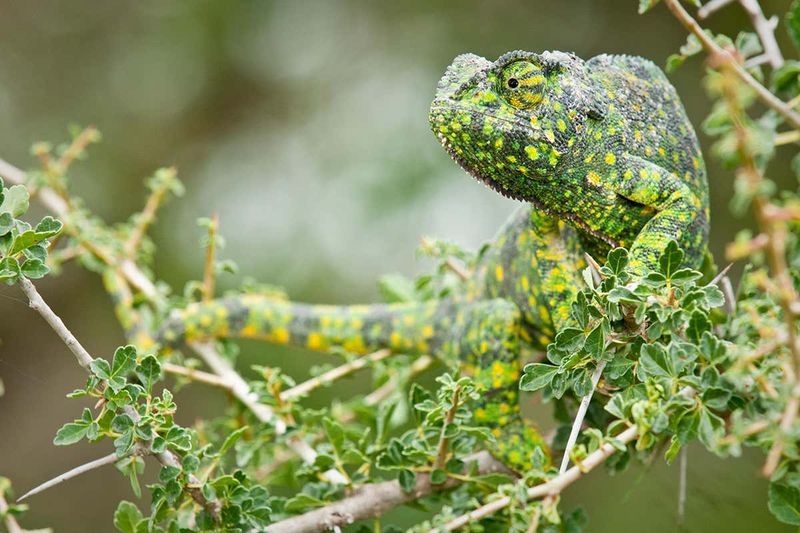
Chameleons are renowned for their ability to change colors. This fascinating trait is not just for camouflage; it reflects their mood, temperature, and even their health.
Imagine a chameleon turning a bright green when happy! This color change is due to specialized cells called chromatophores.
They manipulate light and pigment, creating stunning visual displays. Furthermore, these reptiles use color communication to express emotions or attract mates. Be prepared to witness a living canvas in your home.
Did you know? Chameleons’ color-changing capabilities inspired early artists and scientists alike.
Specialized Diet Needs
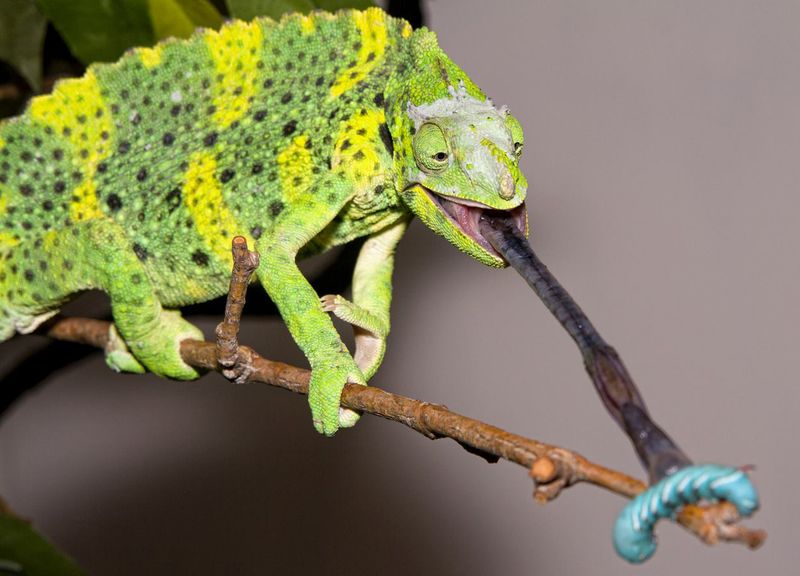
Feeding a chameleon requires more than just offering standard pet food. Their diet must include live insects like crickets, locusts, and worms, which provide essential nutrients.
Harvesting these insects isn’t just a chore; it’s an adventure in understanding a chameleon’s world.
Supplementing their diet with calcium and vitamins is crucial to prevent deficiencies.
Did you know? Some chameleons have a tongue twice the length of their body to capture their prey! Observing this feeding technique is a delight for any chameleon owner.
Unique Habitat Preferences
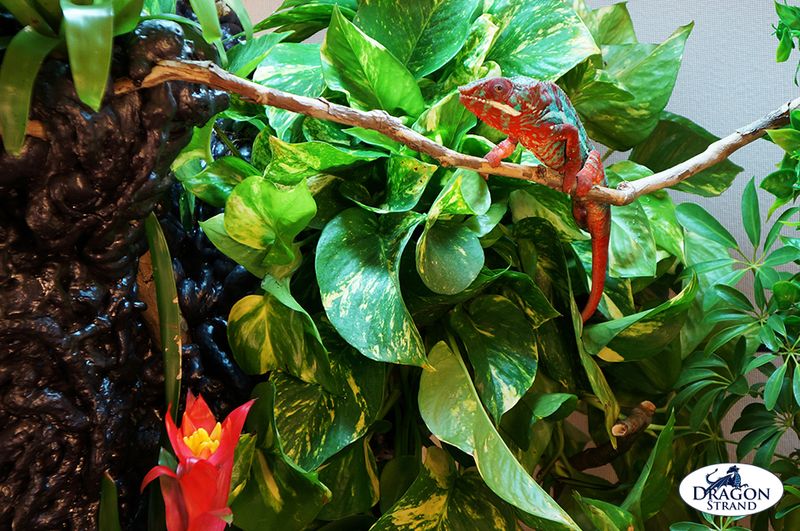
Creating the perfect habitat for your chameleon is an art. They thrive in environments that mimic their natural woodland habitats.
Ensure plenty of branches for climbing and a misting system to maintain humidity.
A temperature gradient in the enclosure offers them a choice of warmth, akin to a chameleon’s sunbathing on a tropical morning.
Did you know? Chameleons are known for their love of solitude. Providing space and privacy within their habitat helps them feel secure and reduces stress.
Handling Requires Care
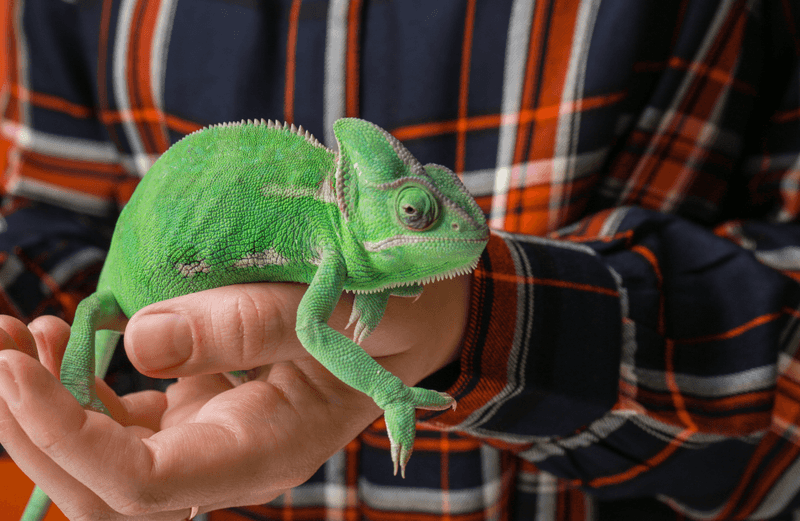
Chameleons are not the cuddly type, and handling them requires patience and care.
These creatures prefer minimal interaction and may become stressed if handled roughly. Approach them with a calm demeanor and gentle touch.
A chameleon’s grip may surprise you, as they wrap their tail around your finger like a vine.
Did you know? Some chameleons inflate themselves as a defensive mechanism. This behavior is their way of saying, “Give me some space!” Respect their boundaries, and your relationship with them will flourish.
Lighting is Crucial
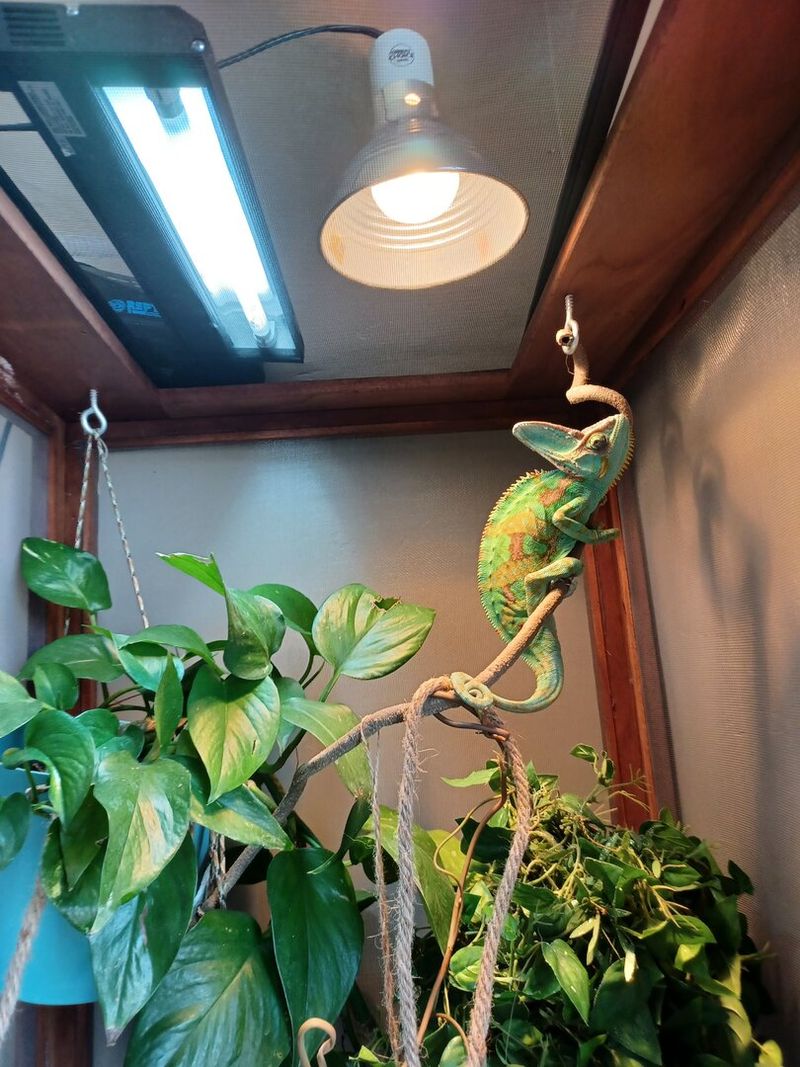
Proper lighting is vital for a chameleon’s well-being. UVB lighting assists in calcium absorption and prevents metabolic bone disease.
Imagine your chameleon basking under its very own sunlamp, absorbing rays like a lizard in the desert. This daily ritual is essential for their health.
Providing a natural day-night cycle with timers helps regulate their biological rhythms.
Did you know? Chameleons’ eyes move independently, allowing them 360-degree vision to spot the perfect sunbeam. Let them enjoy this incredible feature with proper lighting.
Hydration through Misting
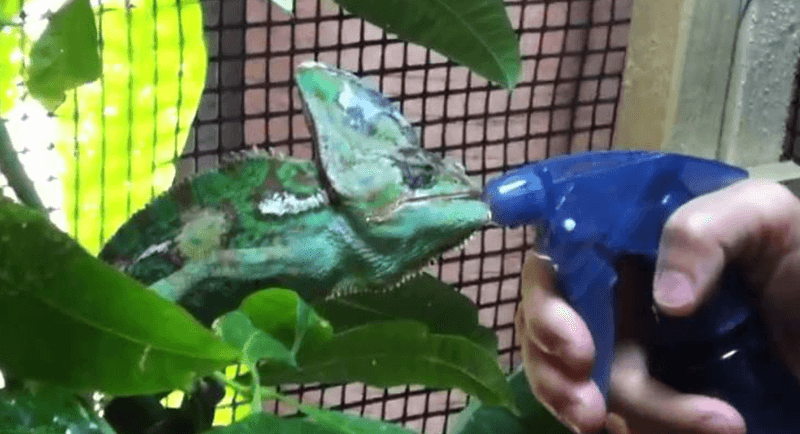
Keeping a chameleon hydrated is a unique challenge. They rarely drink from standing water, relying instead on misting to quench their thirst.
Misting mimics the natural rainfall they experience in the wild. Set up an automatic misting system to create a rainforest ambiance in your home.
Did you know? Chameleons often drink the droplets that collect on leaves. Watching them sip from nature’s cup is a serene experience. This hydration method ensures their skin stays supple and healthy, contributing to their vivid coloration.
Longevity and Lifespan
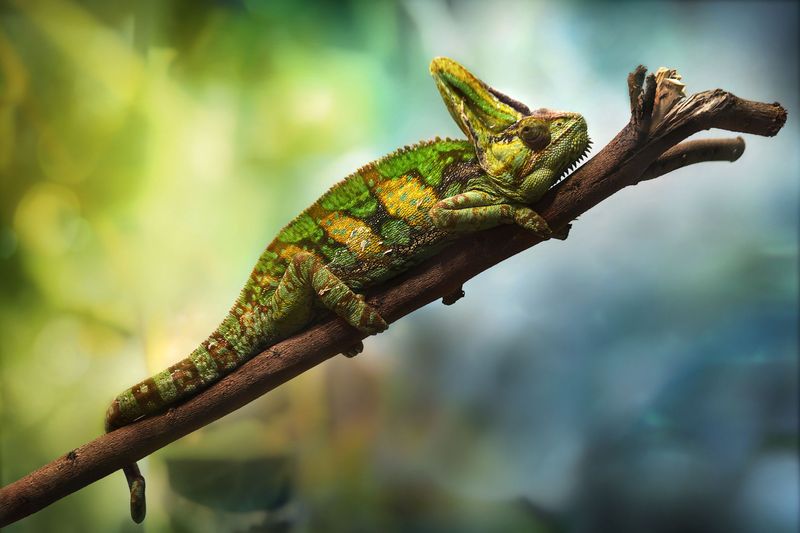
Chameleons have varying lifespans, typically ranging from 5 to 10 years, depending on the species.
As they age, their personality often becomes more pronounced, like a fine wine maturing with time. Understanding their lifecycle helps you cherish every moment with these unique pets.
Did you know? Some species of chameleons live longer in captivity than in the wild, thanks to controlled environments. Providing them with the proper care can lead to a rewarding companionship that lasts for years.
Social Behavior and Isolation
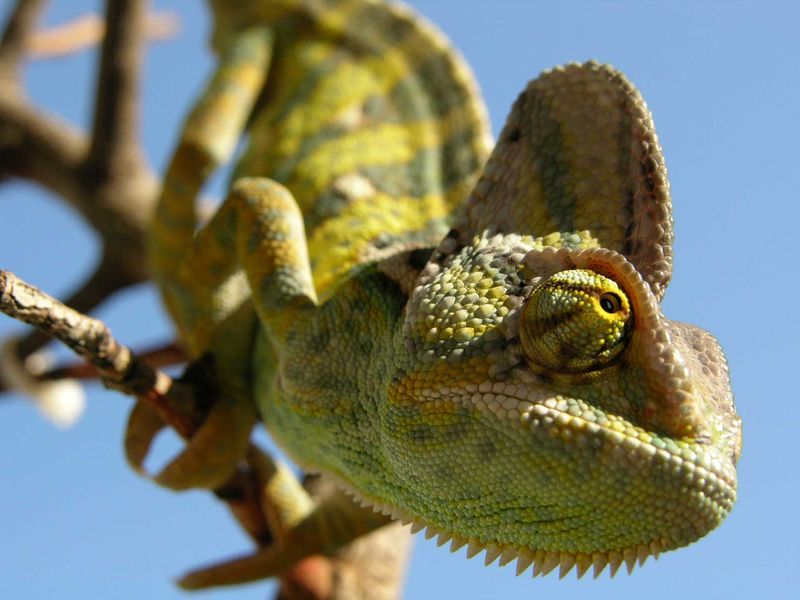
Chameleons are solitary creatures, and they prefer to live alone. Housing them together can lead to stress and aggression.
Respect their need for solitude by providing individual enclosures. This isolation reflects their natural behavior in the wild, where they thrive in their own company.
Did you know? Chameleons communicate with body language and color, even when alone. Observing these subtle signals is like learning a secret language. Embrace their solitary nature, and you’ll find a deeper connection with your pet.
Growth and Shedding
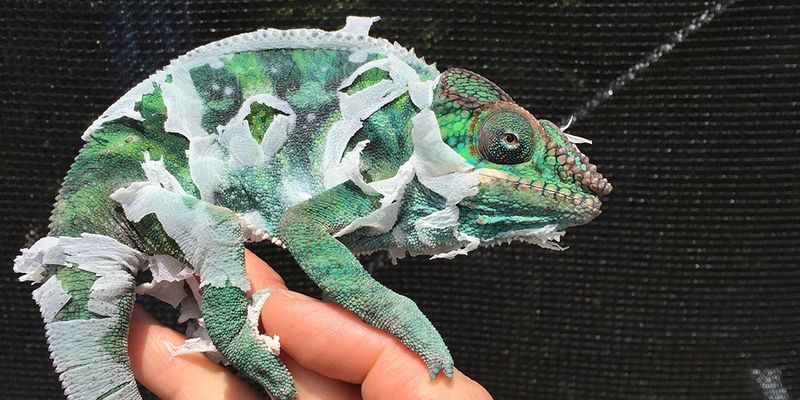
Chameleons grow by shedding their skin, a process necessary for healthy development.
This shedding can occur frequently, especially in younger chameleons. Providing proper humidity and nutrition facilitates this natural process.
Did you know? A shedding chameleon may change color and become less active. This temporary transformation is part of their growth journey. Understanding and supporting them during this phase enriches your bond.
Watching a chameleon shed is witnessing nature’s renewal, a reminder of the cycles of life.
Health Monitoring is Essential
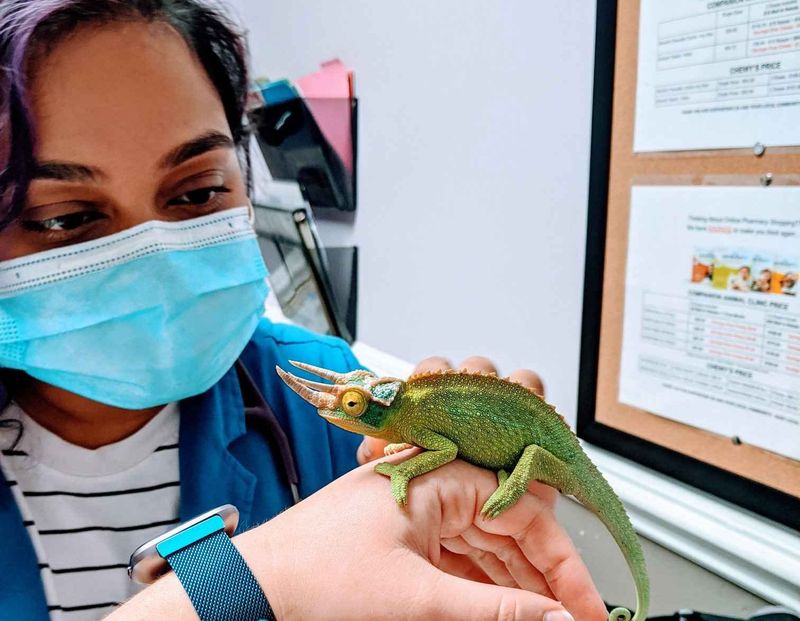
Regular health checks are crucial for monitoring a chameleon’s well-being. Look for signs of illness, such as changes in color, appetite, or behavior.
An attentive eye can catch early symptoms, ensuring timely intervention.
Did you know? Chameleons’ eyes can show health issues. Cloudy eyes may indicate a problem needing immediate attention. Building a relationship with a vet familiar with reptiles ensures professional care.
With diligence, you can maintain your chameleon’s health, leading to a fulfilling and joyful companionship.
Choosing the Right Species
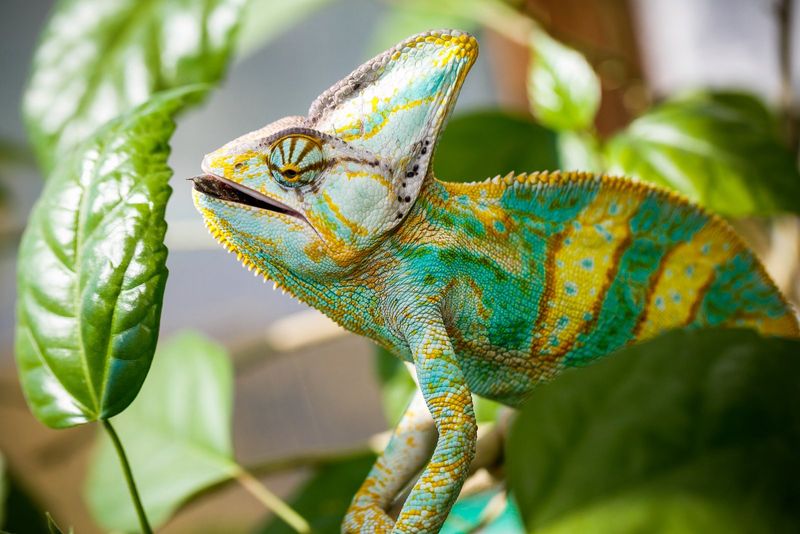
Selecting the perfect chameleon species is a thoughtful process. Each species has distinct needs and personalities.
Researching their size, care requirements, and temperament ensures a harmonious match with your lifestyle.
Did you know? The Panther Chameleon is known for its vibrant colors, while the Veiled Chameleon is more robust. Understanding these differences prepares you for a rewarding pet experience.
Embrace the diversity of chameleons, and you’ll find a species that fits your desires and home environment perfectly.

